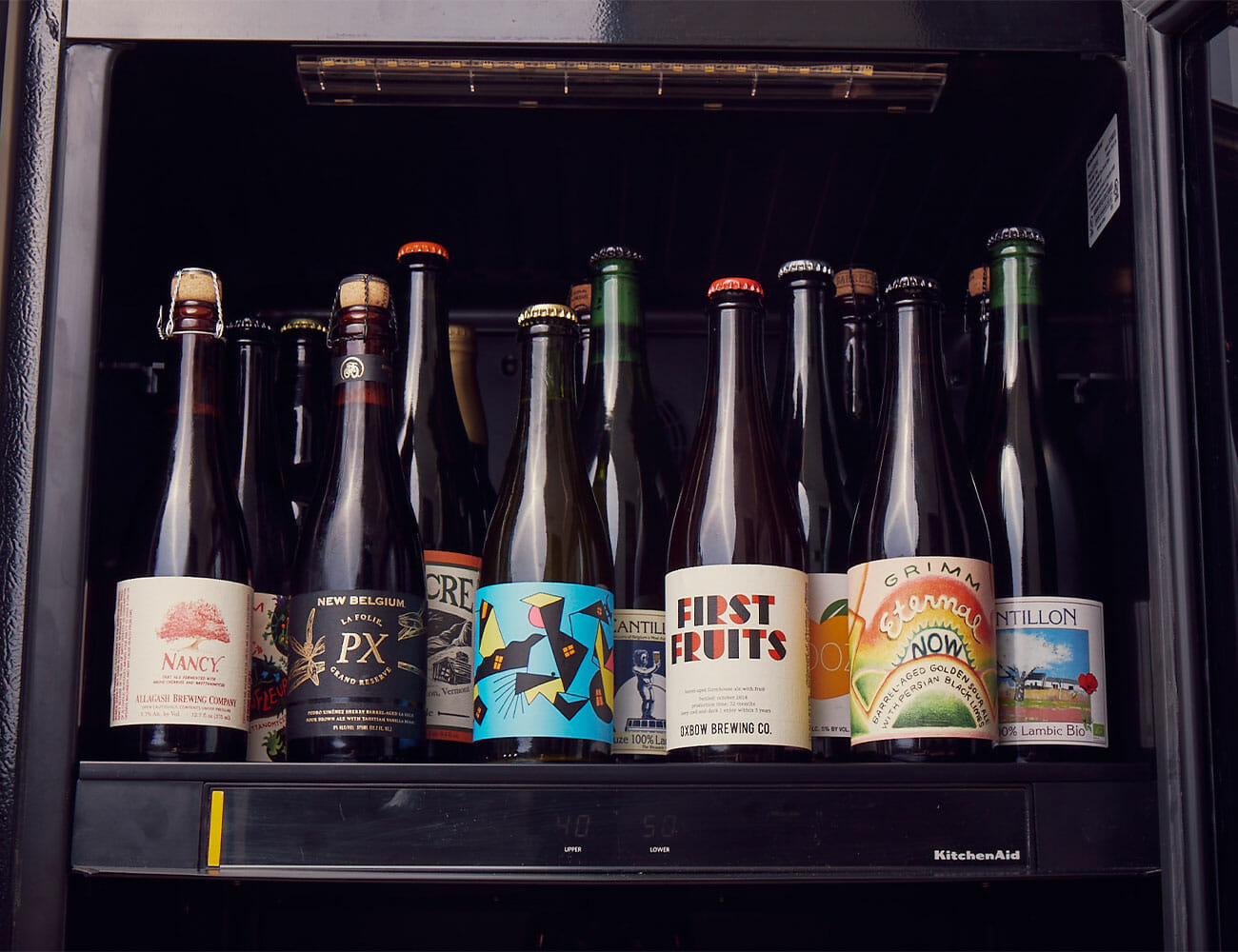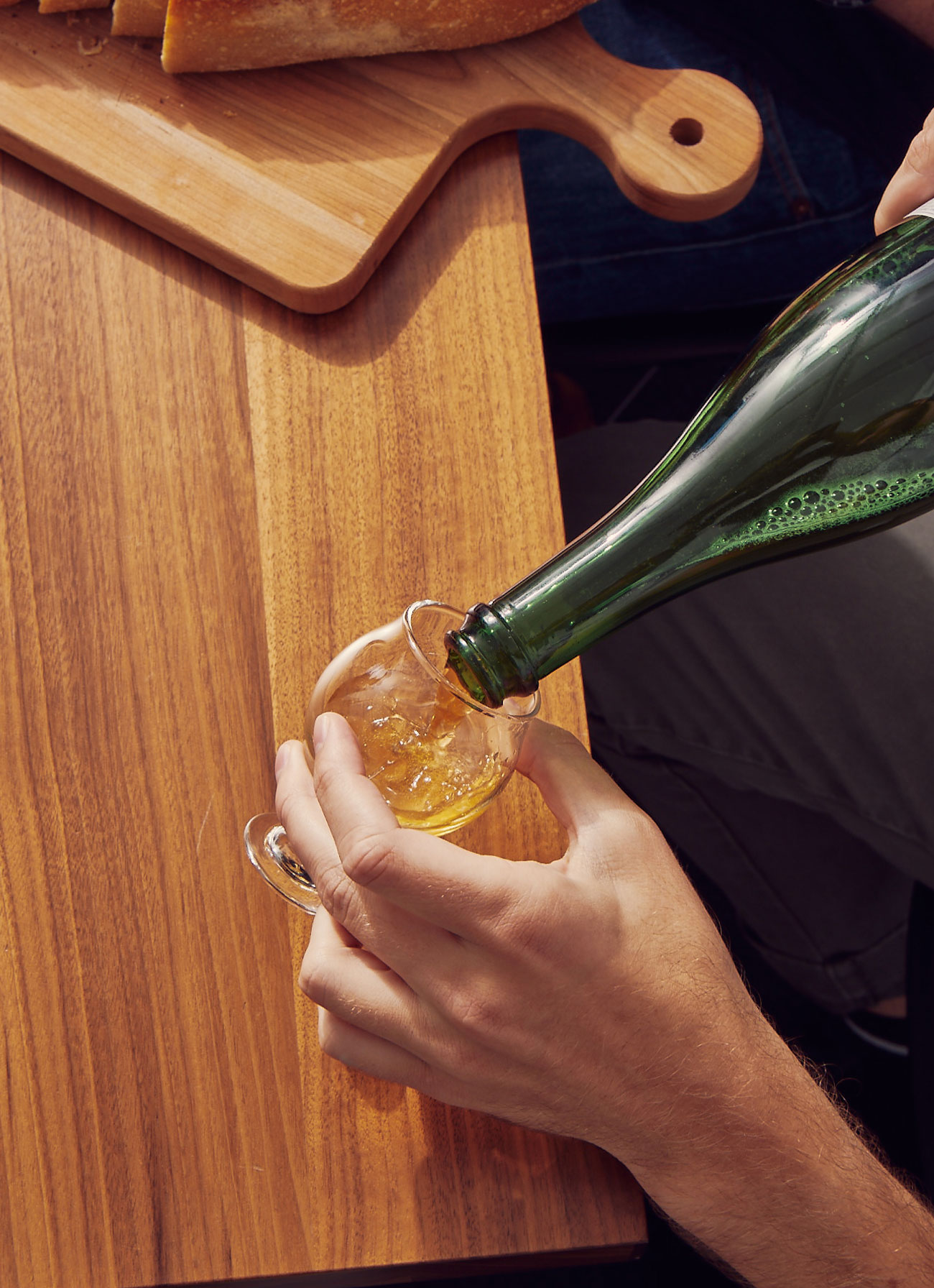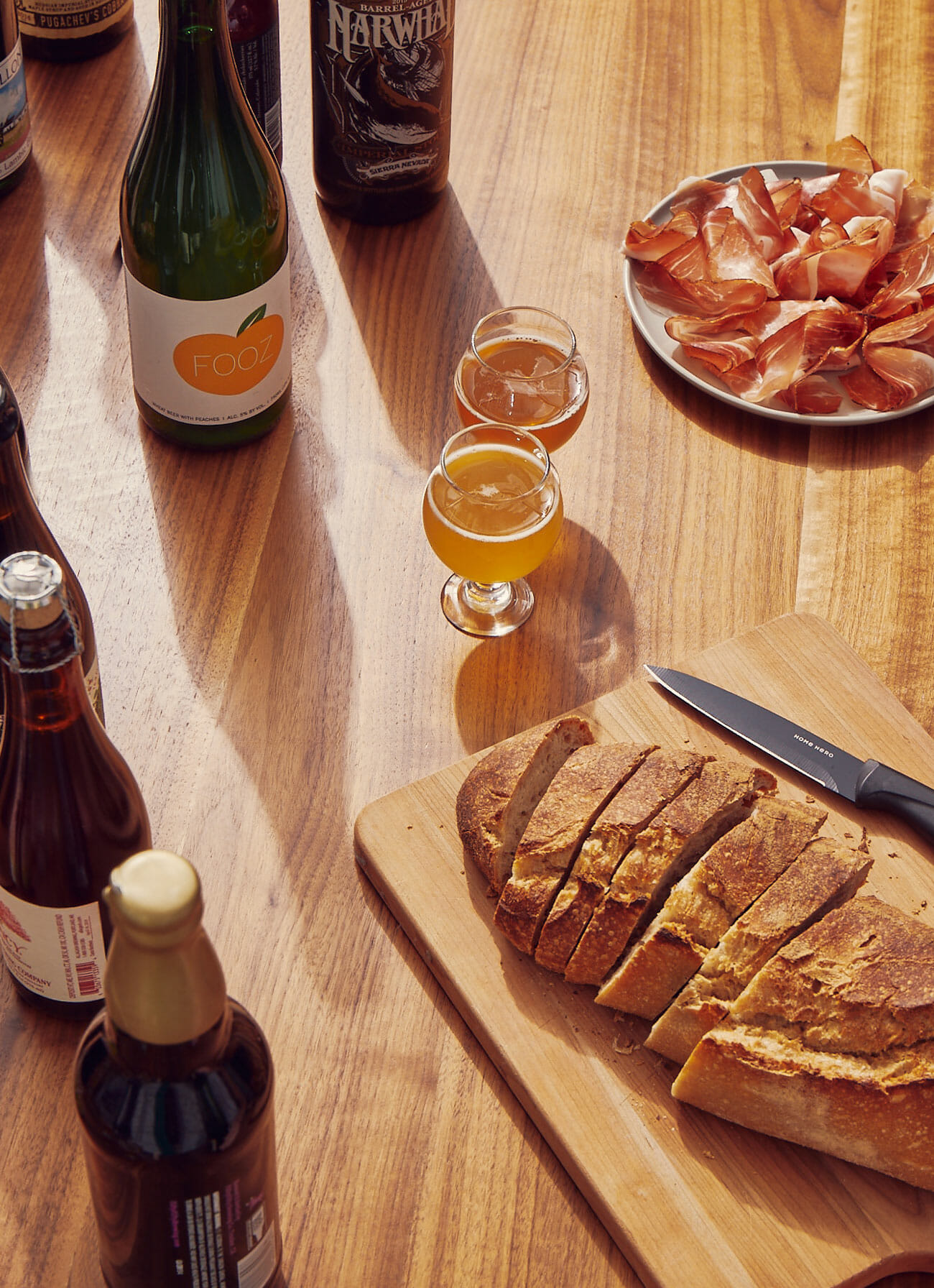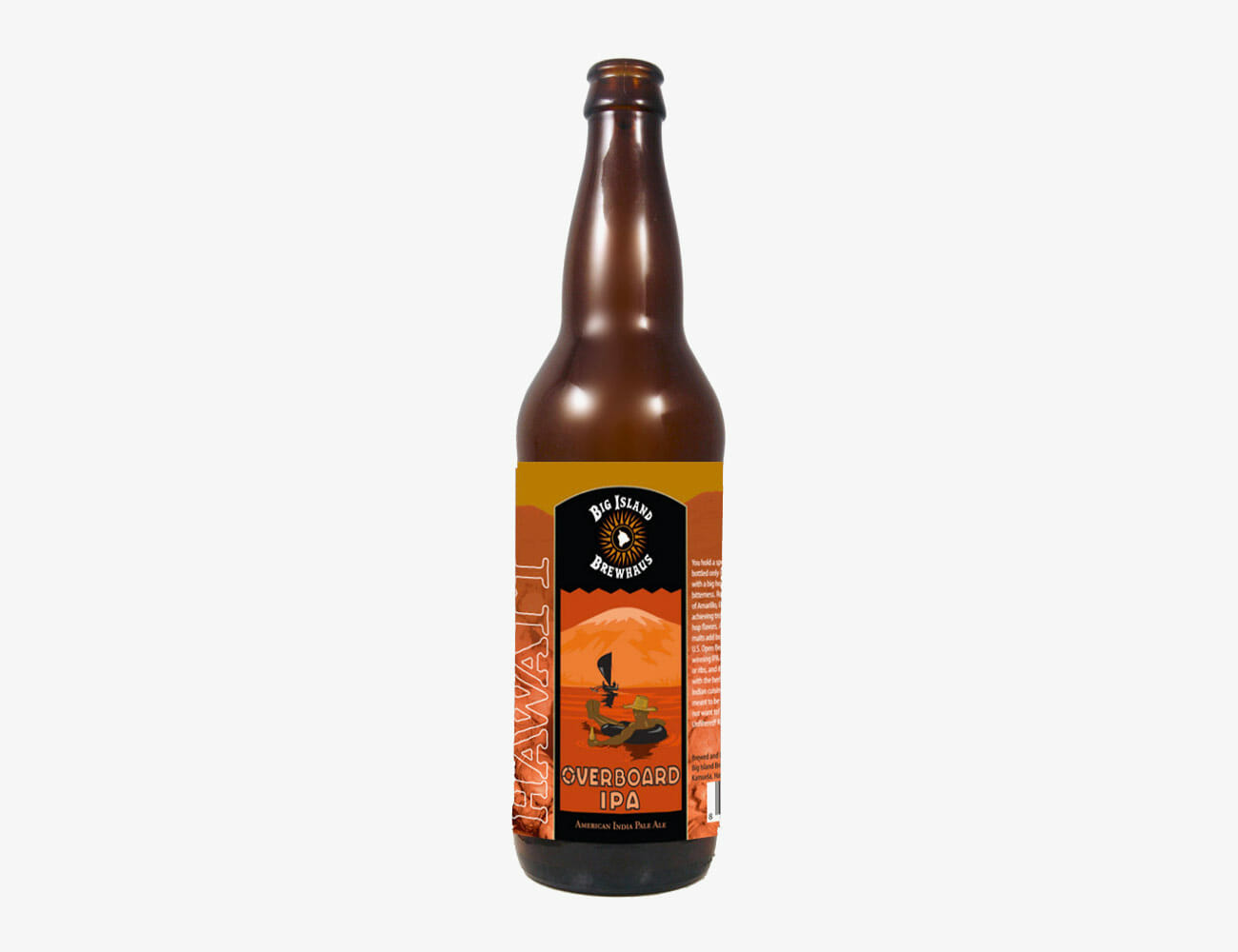Good beer with good friends. That’s the goal of every bottle share, a small gathering to drink rare, unique or hard-to-acquire beers best saved for “that special occasion.” But bad manners and an eagerness to try too much, too quick, can make even the best beer taste off. Which is why we sat down with Benjamin Pratt, cofounder of As Is, one of New York City’s top craft beer bars, who shared his tips for hosting a bottle share, the right way. Here’s everything you need to know before you break out the bottle opener.
Keep the group small.
When coming up with the invite list, keep it under 10 people. “The goal should be a group small enough that the share can actually be conversational and educational,” Pratt says, “not just a free-for-all to try as many beers as possible. Some of the best shares I’ve been to have been with three or four other friends who have great taste and interest in beer.”
Less is more.
Ask every friend that’s attending to bring something, and be clear with the expectations. According to Pratt, two larger format bottles per person is the standard rule of thumb. “When we’ve had shares at the bar and people have shown up with too much beer, there is a superficial pressure to blow through bottles and not actually be able to appreciate the beers,” he says.

From Left to Right: Allagash Brewing Company Nancy, Grimm Ales Camoufleur, New Belgium La Folie Grand Reserve PX, Backacre Sour Golden Ale, American Solera House Couture, Cantillon Gueuze 100% Lambic Bio, Oxbow Brewing Co. First Fruits, Fermentery Form Fooz, Grimm Ales Eternal Now and Cantillon Kriek 100% Lambic Bio.
People want grails, not fails.
Part of the ethos of a bottle share is to share rare beer, so don’t just go down to your grocery store and buy whatever you can find on the shelf last-minute. Pratt says, “Bring bottles that you’ve either been holding onto for a special occasion or that are not normally available wherever you are.”
It’s not a bad idea to set a theme like, say, focusing on specific styles that age well — sours and dark beer. “The point is for people to be able to try something they have never heard of or have always wanted to try,” Pratt says.
Go slow. Stop early.
If each person brings two larger bottles, that means there are two larger bottles per person to drink. You shouldn’t feel pressured to finish everything or open every single bottle. “In my experience, these things are extended drinking sessions that usually result in a slow, creeping drunkenness,” Pratt says. “It’s good to keep in mind that you don’t have to drink every ounce of everything.” If someone doesn’t love a beer, it’s totally acceptable for them to take a few sips and move on — as a host, make sure they know that.
Sequence matters.
If you’re not armed with the knowledge, designate someone to facilitate the order things are being opened. “This way things can be tasted in series and comparisons can be drawn and maybe something can even be learned,” Pratt says. It also helps avoid multiple bottles being opened all at once. Just remember: never open someone’s bottle without their permission. How would you feel?

So does the glass.
Not everyone has two dozen tulip sampler glasses just sitting around for bottle shares, nor is it feasible in terms of storage if you’re a city-dweller in a small apartment. That being said, using full-size pint glasses is far from ideal, as everyone won’t be getting full pours and shaker pints are not “going to heighten your sensitivity to what is put in front of you,” Pratt says. If you don’t want to invest in reusable tasters, Tossware offers plastic cups used by top-notch festivals that won’t affect the taste or aroma of beer.

Food and water are musts.
Just like any other party, you want to give people food options and the ability to hydrate. As Pratt says, “Eat food, drink water, be an adult.” Just make sure whatever food you’re providing isn’t going to take away from everyone’s ability to taste the beers. Items like cheeses, bread, chips, pretzels and meats are all good middle-of-the-road choices.


